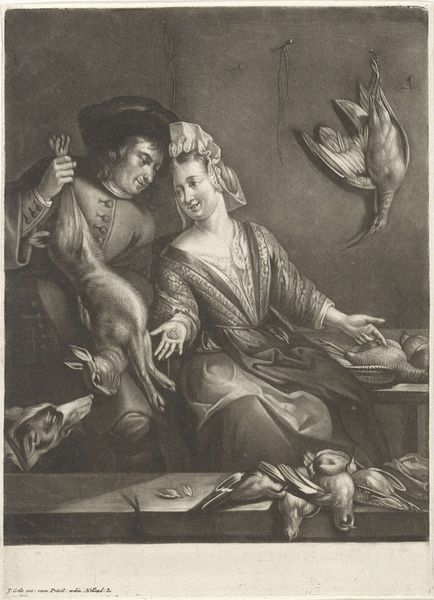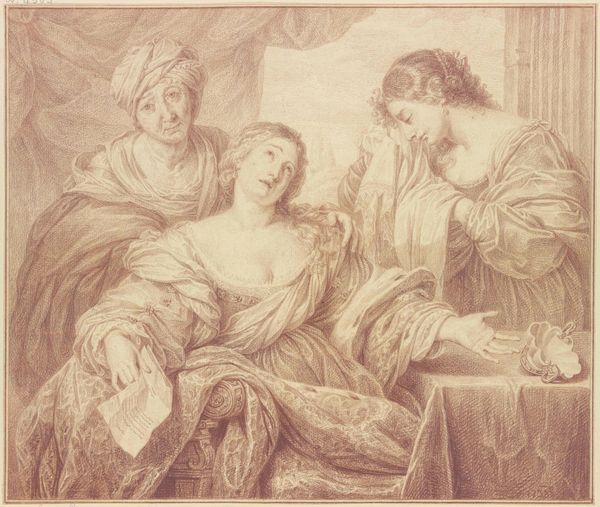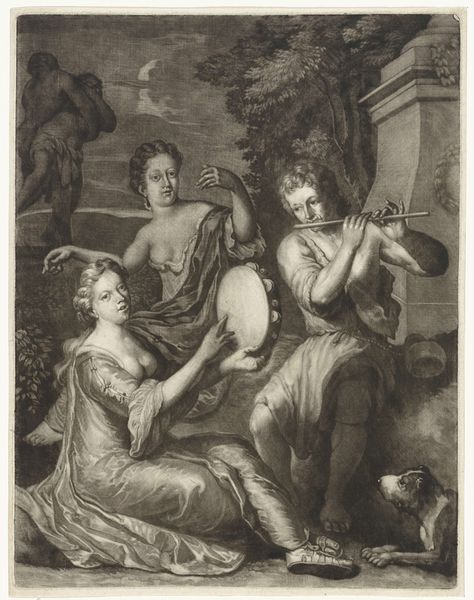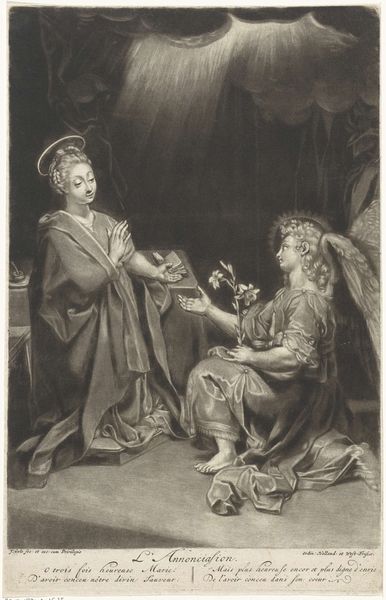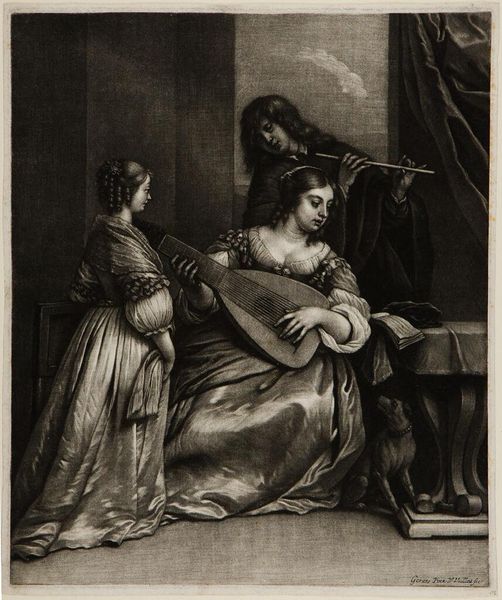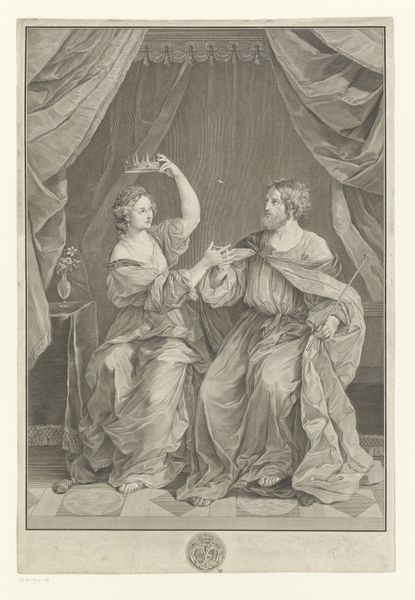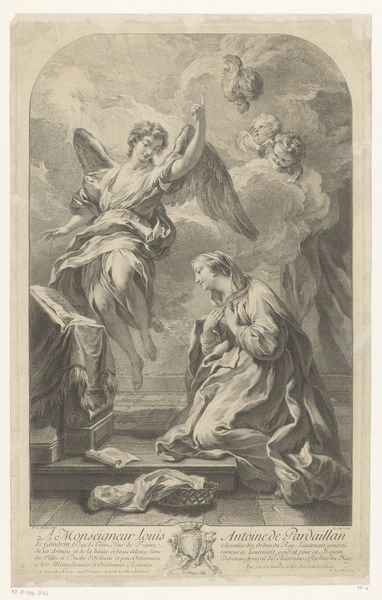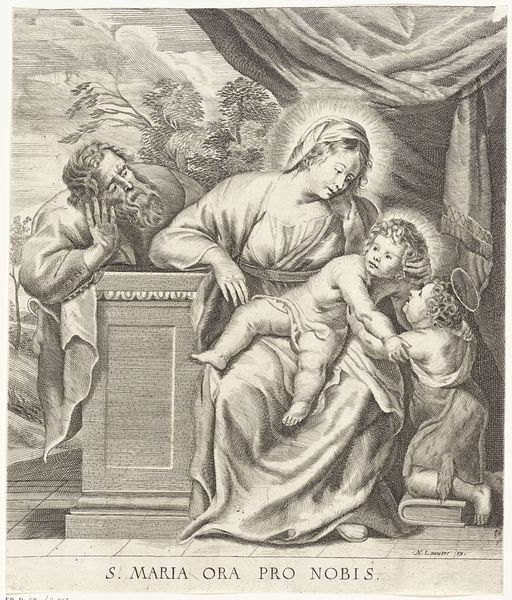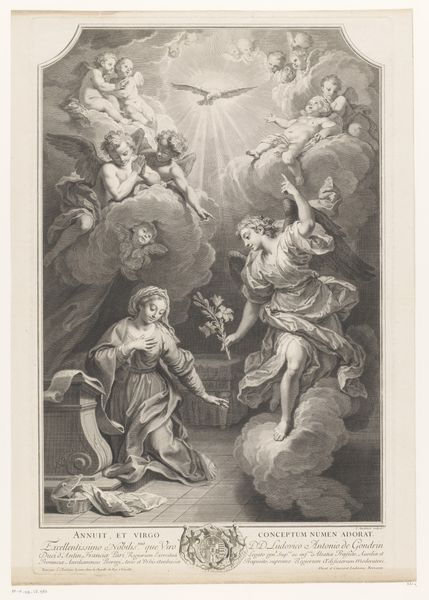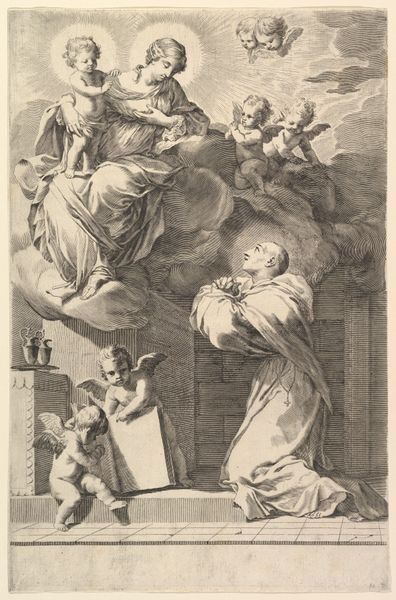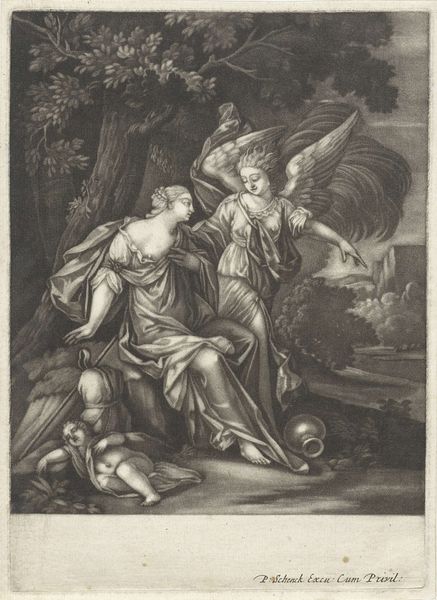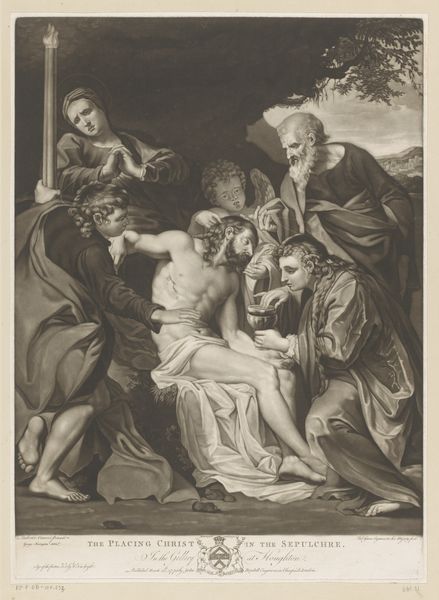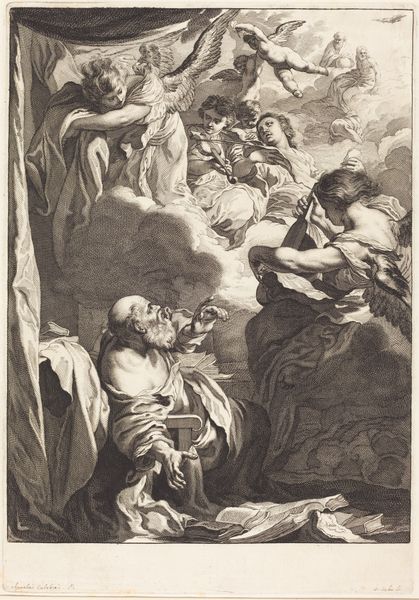
painting, oil-paint
#
baroque
#
painting
#
oil-paint
#
oil painting
#
history-painting
Dimensions: height 207 cm, width 166 cm, depth 8 cm, weight 31 cm
Copyright: Rijks Museum: Open Domain
Curator: This painting captures a pivotal moment in Christian theology. Painted in 1723 by Jacob de Wit, it depicts the Annunciation to the Virgin, rendered in oil on canvas. Editor: It strikes me as dramatically lit, almost theatrical. The contrast between the shadowed foreground and the burst of light above is so vivid. It’s a very Baroque approach to divinity. Curator: Precisely. De Wit was a master of Baroque illusionism, very much aware of how art was viewed within the institutions and social norms of his time. History paintings of this kind not only portrayed Biblical narratives, but also reinforced established doctrines for the public. Editor: Tell me more about that play of light though. The dynamism! I’m drawn to the almost dissolving forms of the cherubs nestled within the cloud, compared to the almost angular precision used to depict Mary. Curator: That contrast is very deliberate, wouldn't you say? Notice how the material rendering of the angel emphasizes its intermediary status? It lacks the full grounded presence of Mary yet isn't as ethereal as the angelic choir above. Think about the art academies of the era; so much hinged on the representation of figures, but even more, how these narratives were understood. Editor: You know, I'm fascinated by the spatial relationships here, too. There is a certain lack of depth. Curator: And its art historical value, right? It really makes one reflect on how theological interpretations, cultural expectations, and of course artistic innovation intersected in the 18th century. Editor: I do think what draws me most is how the formal qualities really bring home the moment, like how de Wit captured a narrative about revelation and change through form. Curator: It prompts us to consider what kind of impact and significance these paintings would have had in the religious and social discourse of the time. Editor: I see it instead, primarily, as an example of superb use of lighting and composition to express an intense psychological and physical revelation.
Comments
No comments
Be the first to comment and join the conversation on the ultimate creative platform.
